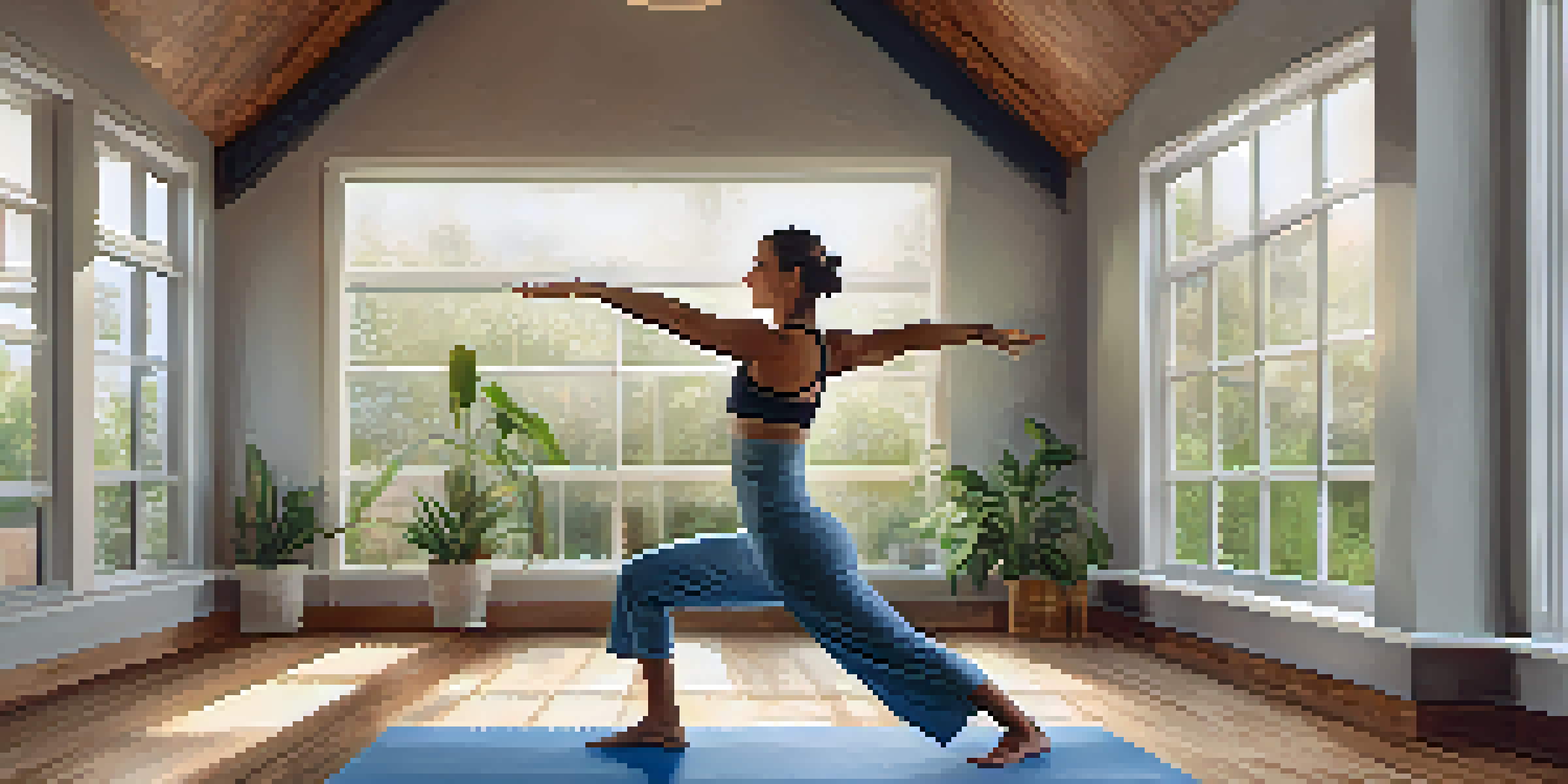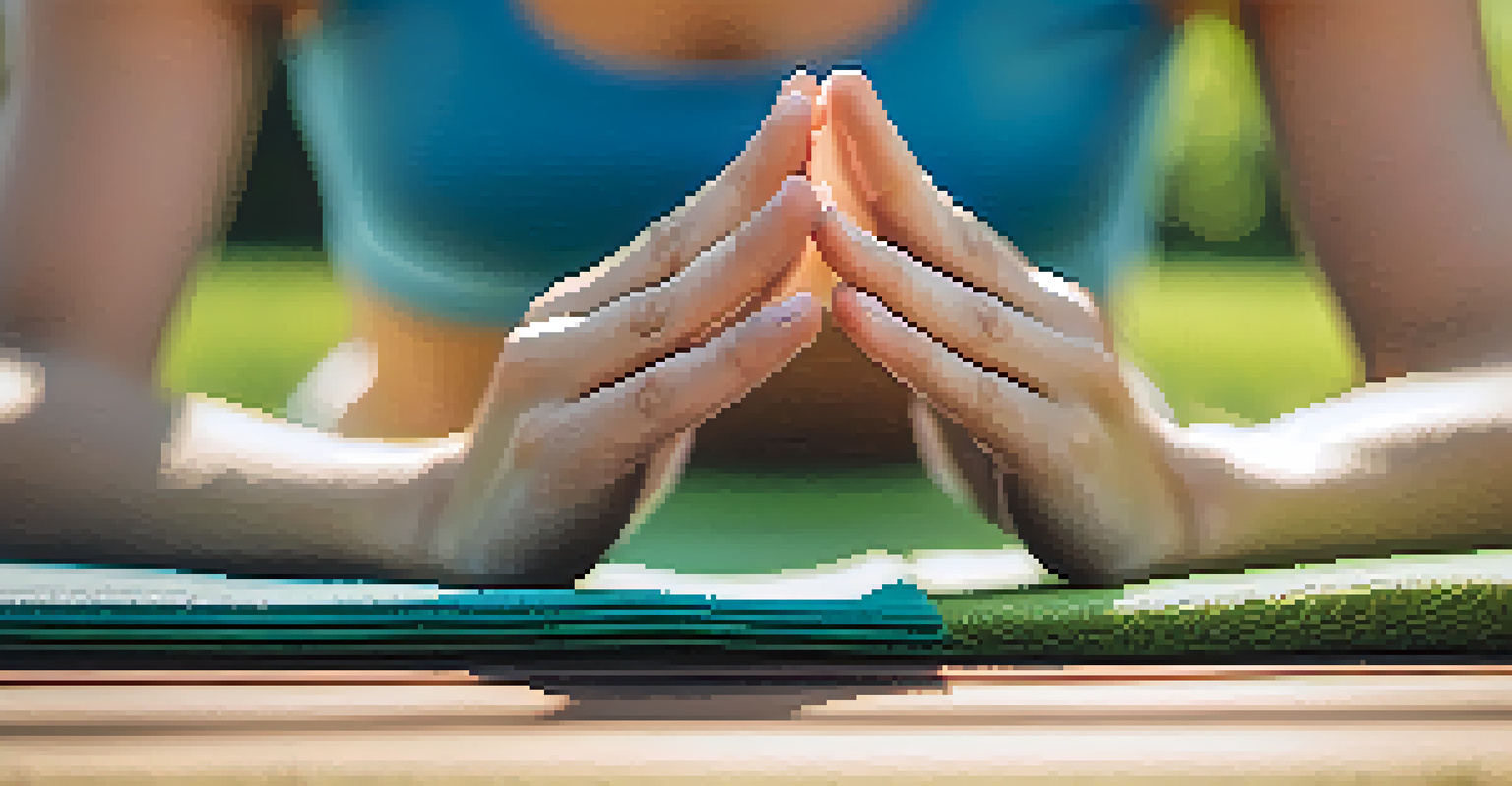Incorporating Yoga for Flexibility and Muscle Growth

Understanding the Benefits of Yoga for Flexibility
Yoga is renowned for its ability to enhance flexibility, which is crucial for overall fitness. By practicing various poses and stretches, you can safely lengthen and loosen tight muscles, improving your range of motion. This flexibility not only boosts your performance in other physical activities but also helps prevent injuries.
Yoga is not about touching your toes, it’s about what you learn on the way down.
Imagine trying to touch your toes for the first time. With regular yoga practice, that seemingly simple task can become easier and more comfortable. This newfound flexibility allows you to explore new movements in your workouts, enhancing your overall physical capabilities.
Moreover, flexibility gained from yoga can lead to better posture and alignment. Improved posture can reduce strain on your muscles and joints, making everyday activities more comfortable and efficient.
How Yoga Supports Muscle Growth
While yoga is often associated with flexibility, it also plays a significant role in muscle growth. Many yoga poses require you to engage multiple muscle groups simultaneously, promoting strength and endurance. This can be especially beneficial if you're looking to build a more toned physique.

Think of poses like the Warrior series, where you hold positions that challenge your balance and strength. As you hold these poses, your muscles work hard, leading to micro-tears that ultimately repair and grow stronger. This process is similar to traditional weight training but emphasizes functional strength.
Yoga Enhances Flexibility
Practicing yoga helps safely lengthen and loosen muscles, improving your range of motion and overall fitness.
Incorporating yoga into your routine can complement your existing strength training, providing a balanced approach to fitness. The combination of flexibility and strength work helps create a more well-rounded physique.
Finding the Right Yoga Style for You
With so many styles of yoga available, it’s essential to find the one that aligns with your goals. For flexibility, styles like Hatha or Yin Yoga focus on gentle stretches and longer-held poses. These practices can help you gradually increase your flexibility without overwhelming your muscles.
The mind is like water. When it’s turbulent, it’s difficult to see. When it’s calm, everything becomes clear.
If you're looking for muscle growth, consider Vinyasa or Power Yoga. These styles incorporate dynamic movements that build strength while still promoting flexibility. You’ll find yourself flowing through sequences that challenge your body in new ways.
Ultimately, exploring different styles will help you discover what you enjoy most. When you enjoy your practice, you’re more likely to stick with it and reap the benefits of both flexibility and strength.
Creating a Balanced Yoga Routine
To effectively incorporate yoga into your fitness journey, aim for a balanced routine that includes both flexibility and strength-focused poses. Start with a warm-up to prepare your body, followed by a mix of poses that challenge your muscles and increase flexibility.
For example, you can pair standing poses like Tree Pose or Warrior II with seated stretches like Forward Bend. This combination allows your body to work hard while also releasing tension in tight areas. Remember, balance is key to preventing overuse injuries.
Yoga Builds Muscle Strength
Many yoga poses engage multiple muscle groups, promoting strength and endurance essential for a toned physique.
Additionally, consider adding restorative yoga sessions to your weekly routine. These sessions emphasize relaxation and recovery, helping your muscles repair and grow after more intense workouts.
Integrating Breathing Techniques in Yoga Practice
Breath control is a fundamental aspect of yoga that enhances both flexibility and muscle growth. Practicing techniques like Ujjayi breathing can help you focus your energy and stay present during your practice. This mindfulness can lead to deeper stretches and more effective muscle engagement.
As you inhale and exhale deeply, you can improve your oxygen flow, which is essential for muscle recovery and growth. This connection between breath and movement not only elevates your practice but also contributes to overall well-being.
Incorporating breathwork into your routine can also reduce stress levels. Lower stress can lead to better muscle recovery and a more enjoyable experience on the mat.
Setting Realistic Expectations with Yoga
When starting your yoga journey, it’s important to set realistic expectations. Flexibility and muscle growth take time and consistent practice. Rather than expecting immediate results, focus on enjoying the process and celebrating small victories along the way.
For instance, if you notice that you're able to stretch a little further or hold a pose longer, take a moment to appreciate that progress. Each step forward is a testament to your dedication and effort, regardless of how small it may seem.
The Importance of Consistency
Establishing a regular yoga practice is crucial for achieving flexibility and muscle growth over time.
Remember, everyone’s body is different, and comparisons can be counterproductive. Embrace your unique journey, and allow yoga to guide you towards your fitness goals at your own pace.
Tips for Maintaining a Consistent Yoga Practice
Consistency is key when it comes to reaping the benefits of yoga for flexibility and muscle growth. To maintain a regular practice, consider setting specific goals and scheduling your sessions just like any other workout. This commitment helps you prioritize yoga in your busy life.
Start with short sessions and gradually increase the duration as you become more comfortable. Even just 10-15 minutes of yoga each day can make a noticeable difference in your flexibility and strength over time. Consistency will help you create a sustainable habit.

Additionally, find a community or partner to practice with. Whether it’s a local class or an online group, connecting with others can keep you motivated and engaged in your practice.